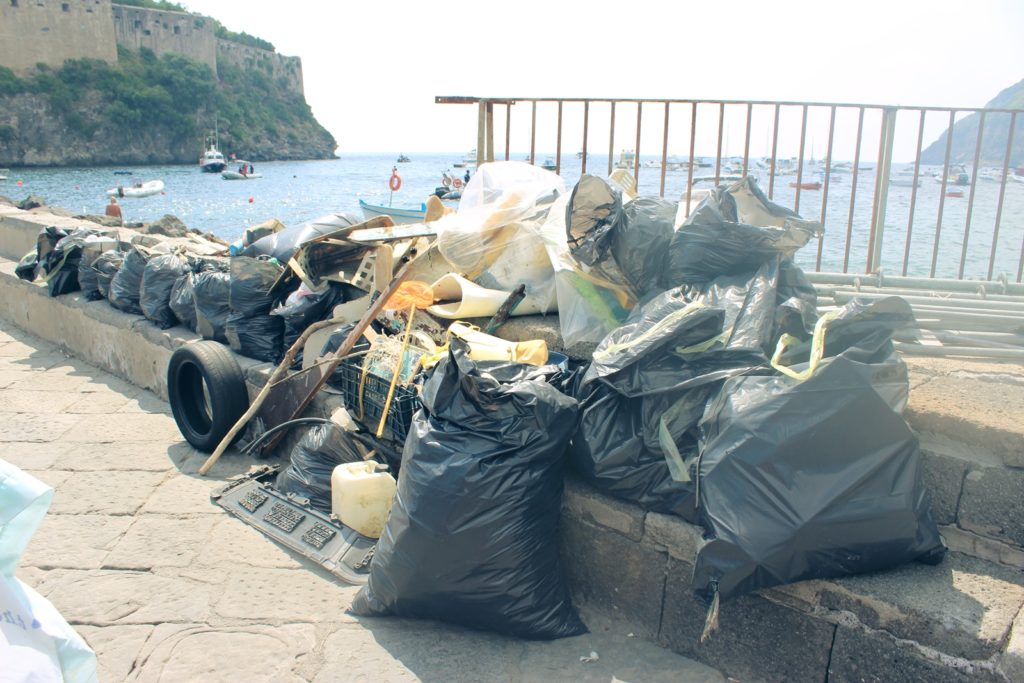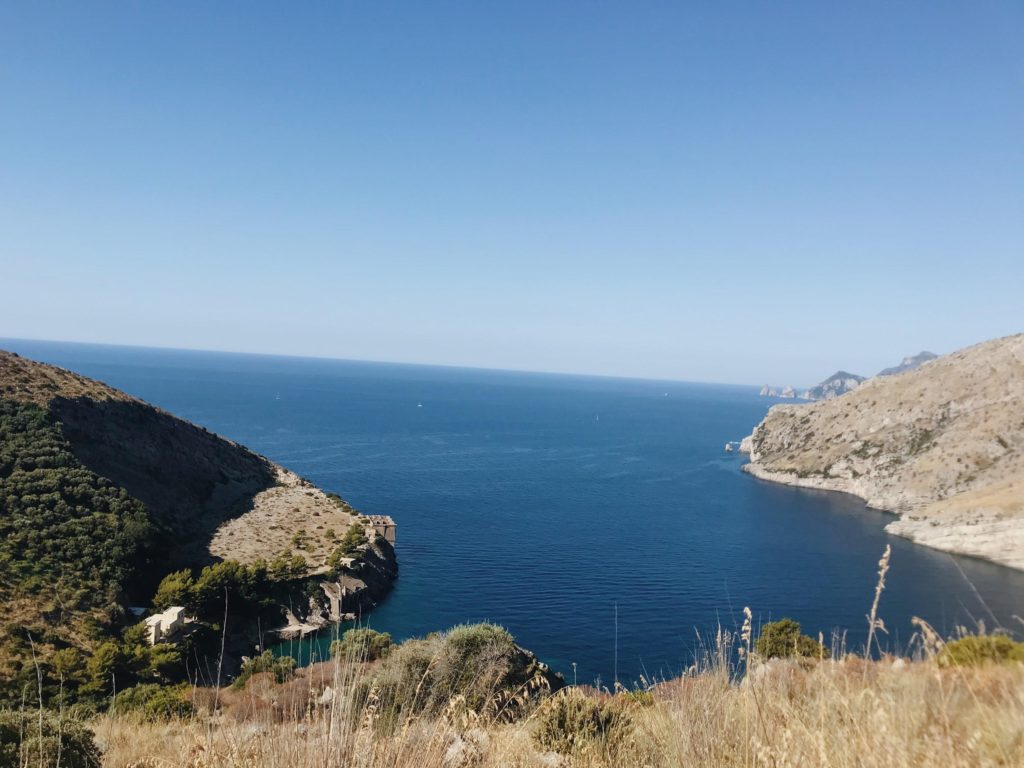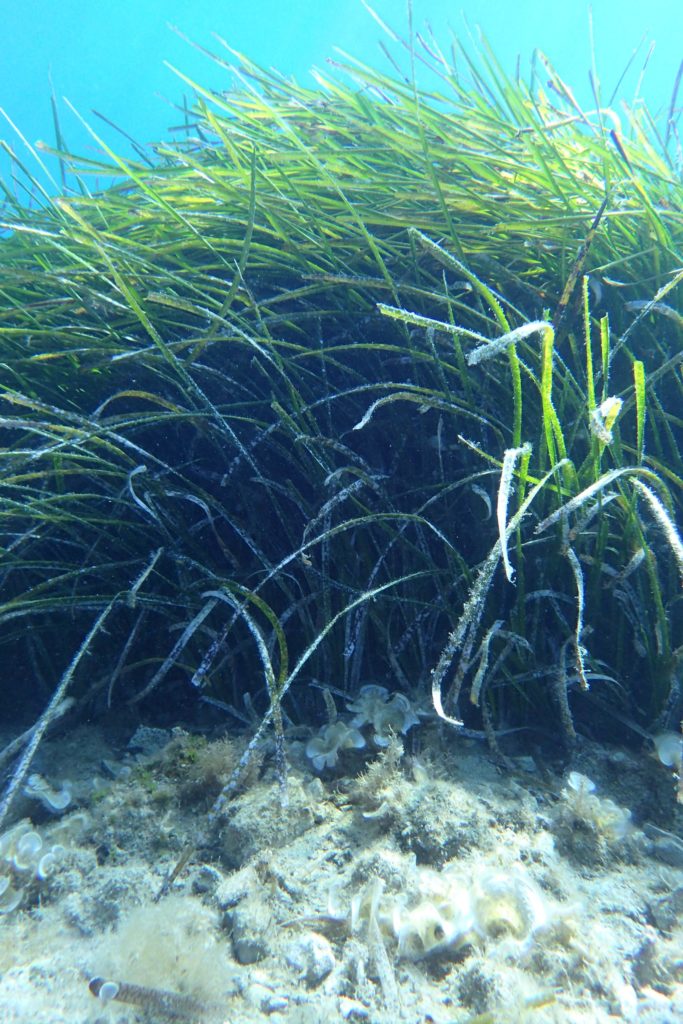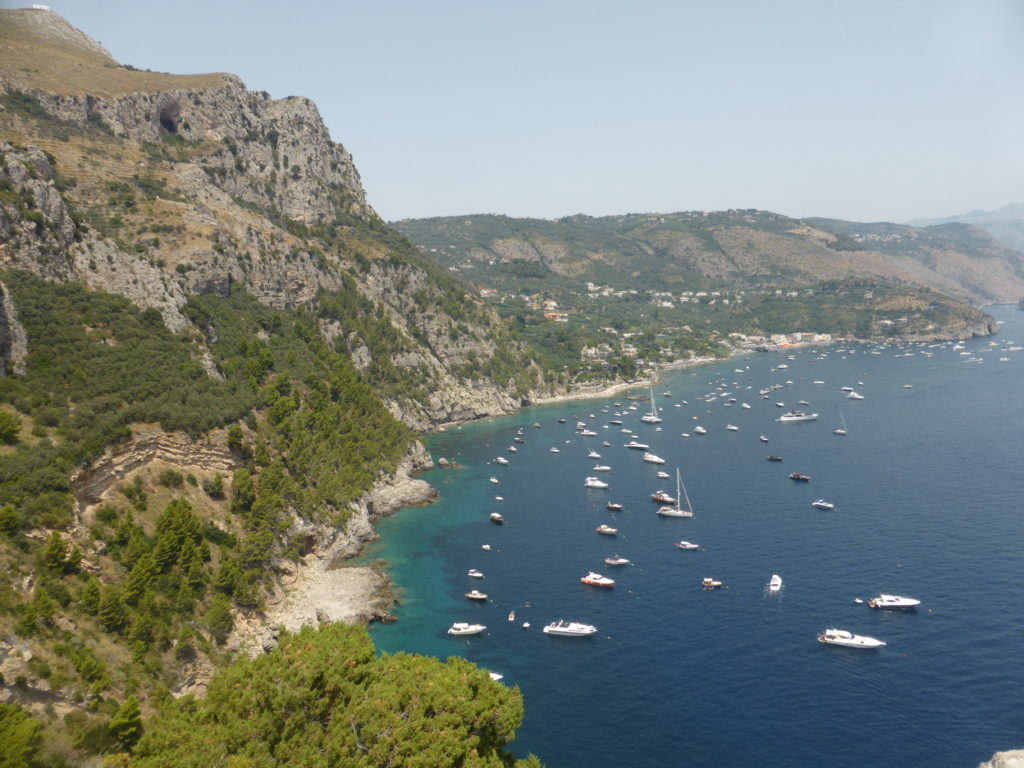Updated on May 7, 2024
Cleaning in Ischia
On the 26thand 27thof July the project M.A.R.E. did a visit to Ischia to help in the cleaning of an area near to the Aragonese Castle.
Isola di Ischia is a volcanic island in front of Naples, rich in thermal aquifers, and houses 60,000 residents. This is lesser known than its neighbor Capri, but has unparalleled wealth and beauty.
In this island takes place the Festa a mare agli scogli di Sant’Anna, the most important of the summer festivals that occurs here. This ancient festival follows a tradition that dates back to the 1930’s, when the fishermen of this Napolitan island decorated their boats to go to the church of Sant’Anna. On July 26th, we had the opportunity to watch this incredible and vibrant show from the front row. We watched the parade of boats in the bay of Cartaromana that precede the “simulated” fire of the great Aragonese Castle and at the end we were greeted with a majestic firework display of about 20 minutes. What a show!

On this island there is also a marine protected area, the Area Marina Protetta Regno di Nettuno, where unfortunately, there is a lot of trash. This trash that has been accumulating for a long time. Not out of spite, of course, but perhaps due to a lack of knowledge about pollution and the problems it causes. This is where our mission began… participating in an event organized on the 27thof July by the AMP Regno di Nettuno, with the collaboration of other organizations from the island. Representing the Area Marina Protetta Punta Campanelawe made up the following team: the Direttore Dr. Antonino Miccio, the Dr. Domenico Sgambati (Mimi) and the volunteers Laura, Daniela and Joana. The cleaning began around 10 o’clock in the morning. Laura and Daniela were on the land cleaning with about 15 others, while Mimi and Joana were submerged in the waters in front of the castle to clean the bottom of the sea with 6 more divers.

A total of about 180 kg of rubbish was picked up in just one arduous morning of cleaning, 120 Kg from the sea and 60 Kg from the land. Other kilos remained there, waiting for the next time to be collected from the sea and its shores.
After we concluded the work, we relaxed and socialized together.

At the end, there was still time for the start of another excellent audiovisual production of our Laura, production whose publication is coming soon.
We left at the end of the day with a full heart and with the desire to return and continue this beautiful collaboration. Ce verimm’ aròppo Ischia.
Updated on July 18, 2018
Once upon a time a field trip in Ieranto!
On Sunday morning, a group of Marine Biology students from the Sant’Anna Institute left Sorrento and began the long journey to Ieranto Bay for their first field trip. We have the chance to have three of them, Eve, Ariana and David, who are doing an internship of 5 weeks with the park, and here it’is their report of this day!

After catching the bus at 7:50, we arrived in the small village of Nerano and began our 40 minute hike down the mountain to reach the bay, in the Marine Protected Area of Punta Campanella.

At the end of the hike, our day in Ieranto began with a quick jump in the beautiful waters of the bay before starting a short lesson about Posidonia oceanica, a type of marine grass that is found throughout the Mediterranean Sea at a depth of 0-45 m.
 The posidonia is a vital part of this ecosystem because it is a biomass producer that serves as food for grazers and detritivores, reduces wave strength and stops the erosion of sediment, and forms banquettes (a nutritional source and habitat) on beaches.
The posidonia is a vital part of this ecosystem because it is a biomass producer that serves as food for grazers and detritivores, reduces wave strength and stops the erosion of sediment, and forms banquettes (a nutritional source and habitat) on beaches.
The posidonia is also home to many organisms, such as Mugil cephalus, Sarpa salpa, and Diplodus vulgaris. It is for this reason that Ieranto Bay is a Zone B protected area, which only allows non-motorized boats and authorized motor boats to come in the bay. Even when the authorized motor boats enter the bay they must dock to the buoys, instead of anchoring, to protect the sea floor.
After our lesson, the group split into two groups and began to explore the bay. The first group went on a kayak tour lead by the volunteers at Project MARE, while the other group snorkeled through caves and along the cliffside with our professor, Domenico (who also leads the Project MARE team).


On the kayaking tour of the bay we paddled out to the tip of the bay to see the the Punta Campanella cave. While snorkeling, we identified species like sea cucumbers, starfish, sea urchins, algae, and so much more! After both groups had a chance to go kayaking and snorkeling we took lunch break so everyone could rest.
 Following lunch, we had another lesson to learn more about all the different species of sea algae we found on our dive. Algae is a polyphyletic group of organisms that use photosynthesis to create energy. Algae can have unicellular, colonial, filamentous, or multicellular bodies that have no vascular tissues, roots, stems, or leaves. They can be divided into either macroalgae or microalgae (phytoplankton). Macroalgae can be green, red, or brown seaweed. This brought us into our next activity, identifying and sorting all the algae we found in the water.
Following lunch, we had another lesson to learn more about all the different species of sea algae we found on our dive. Algae is a polyphyletic group of organisms that use photosynthesis to create energy. Algae can have unicellular, colonial, filamentous, or multicellular bodies that have no vascular tissues, roots, stems, or leaves. They can be divided into either macroalgae or microalgae (phytoplankton). Macroalgae can be green, red, or brown seaweed. This brought us into our next activity, identifying and sorting all the algae we found in the water.
While working on the algae identification, other groups began measuring Posidonia leaves to determine how much they were photosynthesizing in a certain area. We had to split up the leaves into different life stages and measure the length and width of their leaves. Then we took the measurements to calculate how much Posidonia was able to photosynthesize in the area.


The third group of students went back into the water to draw marine organisms living on the rocks, Posidonia, and any other organisms that happened to be swimming by. We were able to do this by using waterproof boards, pencils, and snorkels while swimming.

Once our day came to a close, we were unprepared for the uphill hike that lied ahead of them. After the climb back up the mountain, we were relieved to be riding back to Sorrento on an air conditioned bus. Overall, all of us really enjoyed this hands-on experience exploring the bay.
The integration of presentations with field studying helped us truly understand the material and its applications in the real world, everyone can’t wait to return!

Updated on November 27, 2018
Few rope, poor sailor!
This summer three of us have the opportunity to participate in another important work of the park : the Campo boe, in company of Nicola and Luca!

Indeed, in the B zone of the area, it’s not allowed to navigate without authorization, and it’s not possible to anchor. To give the opportunity for the numerous visitors to enjoy also this kind of zone, the park has created a place where boats can stay, by attaching them at the buoys. So, in Mortella, near Marina del Cantone, there are 35 buoys at the disposition of the boats.
This little «parking» on the sea is very important because it’s an alternative to the ancorage : it gives the opportunity to stay in an eco-friendly way without putting the anchor and so without doing damage to the meadows of posidonia which are keepers this place’s richness!

So we are here on a MPA vessel to «park» the boats: we take the rope of the boats to attach them to the buoys, and so, by paying according to the dimension of their boats, people can stay quietly all the day.
As well as being very important for the posidonia, this work is also necessary for being always close to the visitors of the park: we are here to greet them, give some information about the area… We are a vitrine of the park, we have to give them a good picture and leave them nice memories of their trip in the area.
Moreover, in this zone so many boats are passing by, most of all during the summer. Indeed, the gulfs of Napoli and Salerno constitute the second place worldwide where boats transit the most, after the gulf of Hong Kong. Imagine all the people! Moreover, in the weekends and until september, the work to do at the buoys camp is at its maximum.
But apart from this summer time, in the week it’s still a little bit calm. So at the begining, with the company of Luca, a very nice and passionate sailor, we used the quiet time to learn how to be more of a sailor! In fact, besides having great conversations about the place, we learned how to make knots !

Nodo piano (which can quickly become a nodo di ciucio, if you’re not enough assiduous – donkey knot in neapolitan!), nodo parlato aperto but also chiuso, nodo gassa dell’amante, nodo savoia, so many rudementary knots that now we can do and that make us a little more sailors than before! Even if for this we have to follow this very simple rule: leave enough rope at the extremities! As says this proverb, few rope, poor sailor (poca cima, poco marinaio)!

Thanks Nicola and Luca for your congeniality!
Posted on July 6, 2018
WORKING IN IERANTO BAY!
About a month ago, we started going on weekends to what will be our main working place during the summer – Ieranto Bay. Here we have already had the opportunity to participate in several activities.

Initially we started by cleaning the FAI (Fondo Ambiente Italiano) info point, which was once part of the facilities of a quarry that existed in this place and that now serves as information point about the Ieranto Bay. Here we share, with all those interested in visiting us, all the information about this wonderful bay, always representing the 3 organizations that collaborate here – FAI, AMPPC (Area Marina Protetta Punta Campanella) and MAREA Outdoors. This is also the meeting point for all visitors who want to participate in the available excursions, both pedestrians and by kayak, is the point for snorkeling material collection, for all who want to see the rich biodiversity that can be found under these clean blue waters and also where we do some activities with visitors (imagine, we have already collaborated in a class given to a group of students from the USA on algae and on the marine plant Posidonia oceanica).
In order to be able to receive visitors and inform them in the best way, we had to learn a lot about this place. For this, we counted on the precious help of people who work here daily, for a long time, and who have the bay as a second home. These people are Antonella, Salvatore, Domenico, Gianna, Pepe, Guido, etc. They are always willing to help or share some history with us. We also had a kayak trip around all the coastline of the bay, with Domenico, with the right to detailed explanation and then we elaborated drawings of the same, so that we could perceived every single detail of it.
It is also part of our functions and is perhaps the most important, to monitor the bay, which consists of several things:
- One is to monitor the boats. For this we record all boats that enter here and we inform them that they are in zone B of a protected marine area. If it is an unauthorized motor boat, we also inform that they cannot be there and we kindly ask them to leave, showing other options where they can enjoy what the sea has to give them. Meanwhile, whenever possible, we collect marine litter that we find along the way;
- We also monitor the visitors, by checking and taking note of the number of people in the bay every 2 hours and we collect the water temperature;
- Finally, we monitor, through snorkeling, the species of organisms we can find in this bay, as well as their abundance.
All this data collection will serve later to understand how the state of the Ieranto Bay varies over time.
We believe that, although very tiring, this will be a full summer, filled of work and new experiences and we also will consider Ieranto Bay as a second home, for which we already have a great affection.
Updated on June 22, 2018
Our AMAZING mentor: Simona!
We are writing a special post for us, it’s about an important part of the project: our MENTOR: the environmentalist and naturalist Simona Gargiulo. She is an extraordinary human being, super nice, affectionate. Always helpful and concerned about feelings and needs of all.
In an European Volunteering Service, the mentor is the connexion between the project and the volunteers and this figure can be often invisible to our readers. For the PROJECT M.A.R.E. she is undoubtedly necessary! She has to try to help us with all the problems that we can have, from intermediate when we have a healthy problem to trying to fix a broken oven.

However, she is doing much more. From the first day she is trying to build a family and after three months we can say that she has got it. Officially, the mentor time is a compulsory part of the EVS program but for us it is one of the best moments of the week. With her, we’ve learned how to cook gnocchi alla sorrentina or discovered the best pizza ever in the Pizza festival in Vico Equense with her friends.

Besides, we are so lucky because she is a professional nature guide, and she has shown us hidden places of the Peninsola Sorrentina like secret paths, il Deserto or a hiking around the Saint Francesco Convent.

For all this, Simona is more than a mentor she is also our friend and part of our Marelini family.

Last, we don’t want to forget old mentors that nowadays are part of our life in Italy and they are support us as well. Thanks to Nuria and Stefano for integrating us from the first day in their group of friends, Francesco for being the best kayak instructor we can have here and obviously Alba, our mamma italiana. THANKS SO MUCH TO EVERYONE!




